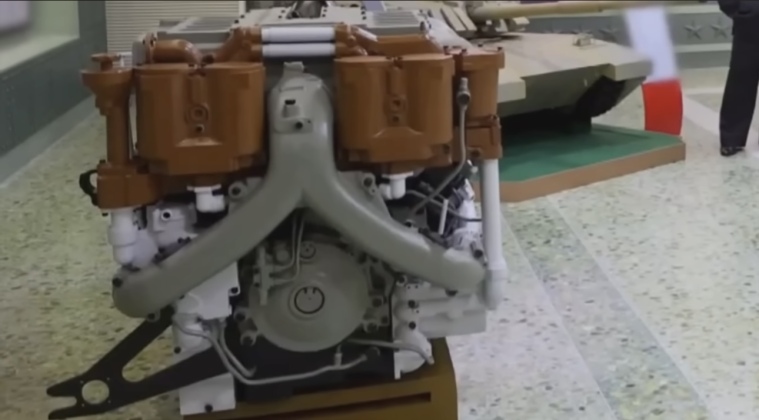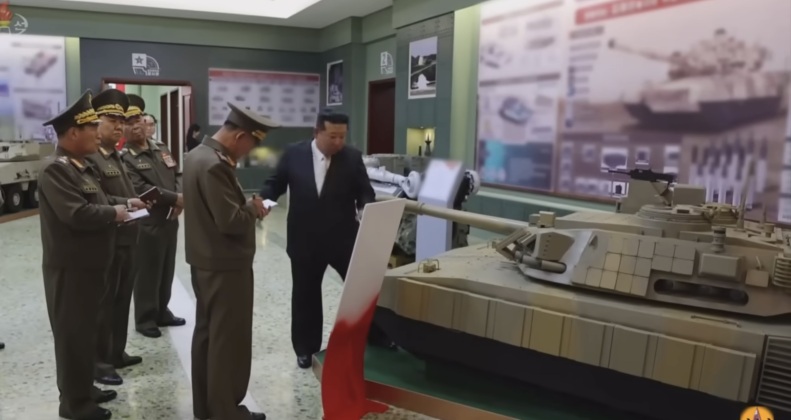North Korea unveiled it clean sheet next generation main battle tank design for the first time in October 2020, stimulating widespread speculation and raising significant questions regarding its future capabilities and its implications for the future combat potential of the country’s armed forces the Korean People’s Army. New details regarding the vehicle, however, have provided significant insight into the state of the North Korean defence sector and answered many of the most important questions regarding the vehicle. One particularly outstanding question answered in a recent state broadcast has been the tank’s designation, with the vehicle having previously been referred to in the West as the M2020, based on the year of its unveiling. The United States has long used ‘M’ designations for its own armoured vehicles, such as M1 Abrams for its sole currently operational tank class and M48 for its primary tank of the early Cold War era which entered service from 1953. The new North Korean tank has been confirmed to be designated the Chonma 2.
The Chonma 2 is the third tank class to have been produced in the country, following the original Chonma of the 1980s, which was closely based on the Soviet T-62, and the Chonma-215/216 tank which entered service in the early 2000s as an indigenous design with influences from the T-62 and the newer Russian T-72/90. The Chonma-215 and Chonma-216 are also referred to as the Songun – named after the ‘military first’ policy of the 1990s when the tank saw its final development. Chonma means Pegasus and is thus a more generic designation not associated with a specific time period.
Regarding the firepower of the Chonma 2, the tank has been confirmed to have access to three separate kinds of rounds, namely armour piercing fin stabilised discarding sabot (APFSDS), high explosive anti tank (HEAT), and High Explosive Fragmentation rounds. Particularly notable is the APFSDS round used, which is a modern design with an excellent length to diameter ratio indicating a very high penetrative capability. Greater length indicates a more structurally efficient sabot design allowing it to defeat greater line of sight armour depth. The tank was previously known to also have a secondary armament of Bulsae-3 anti tank missiles, a derivative of the Russian Kornet with advanced penetrative capabilities. The Kornet has proven highly effective against most modern tank classes widely used in Western militaries including the British Challenger 2, German Leopard 2 and American M1 Abrams.
Perhaps the most unusual feature of the new tank is its use of a manual loader and four man crew, in contrast to modern Russian, Chinese and South Korean tanks which all use auto loaders and three man crews. This is a trend which Western tanks are expected to catch up to with their next generation of armour, and makes North Korea the only country using vehicles with Soviet gun calibres that has not adopted autoloaders. An advantage of this, however, is that the Chonma 2’s four crew will be able to provide more maintenance assistance, while the country’s particularly large manpower means there are no shortages of tank crew faced in other countries.

A particularly notable feature of the new tank is its integration of thermal sights for both the gunner and for the commander. While the large majority of tanks have no thermal sights, many that do have a single set of sights in order to reduce costs. The kind of sights installed remains uncertain, as they have features clearly distinguishing them from those fielded by other countries. They may thus be dated first generation sights, like those of the Challenger 2, or modern third generation sights like those on the T-90M. Fire controls notably also include a screen with several buttons that appear to be a battle management system with advanced positioning features – something few tank classes in the world can boast. The tank’s engine appears to closely resemble the German MT883 from the Leopard 2 tank, but with some notable differences such as the turbocharger and intercooler. With the German tank class having been very widely exported, the possibility of North Korea’s defence sector gaining access to the design remains significant. The Chonma 2’s far lighter weight than the Leopard 2 could facilitate a much higher level of mobility should its engine have a similar performance. Other features of the tank confirmed include a hard kill active protection system and explosive reactive armour.

North Korean tanks have throughout the country’s history been well behind their leading foreign counterparts in performance, with the Chonma based on the T-62 having been acquired as the USSR was producing far more capable tanks such a the T-80U. The performance gap was slightly bridged by the Songun tank in the 2000s, although its lack of thermal sights was a particularly major drawback that still left it behind the top Soviet tank the T-80UK. North Korean tanks have nevertheless been very well optimised for warfare in the country’s mountainous terrain. The Chonma 2, however, appears to be the country’s first tank that is genuinely highly competitive internationally in performance, potentially stimulating exports to traditional clients such as Syria and Ethiopia.

Considering the philosophy shaping the country’s thought on armoured warfare, the Chonma 2 is likely to have been designed to prioritise very low maintenance requirements and to remain light and highly mobile allowing operations in mountains and on civilian bridges and roads. The new vehicle stands out as the first fully clean sheet design in North Korea, with the original Chonma being very closely derived from the T-62, while the Chonma-215/216 is loosely based on the original Chonma. The Chonma 2’s development comes as North Korea’s defence sector has made major strides across the spectrum of performance areas and demonstrated the ability to produce modern hardware independently in areas ranging from cruise missile submarines and intercontinental range ballistic missiles to long range surveillance drones and spy satellites.
